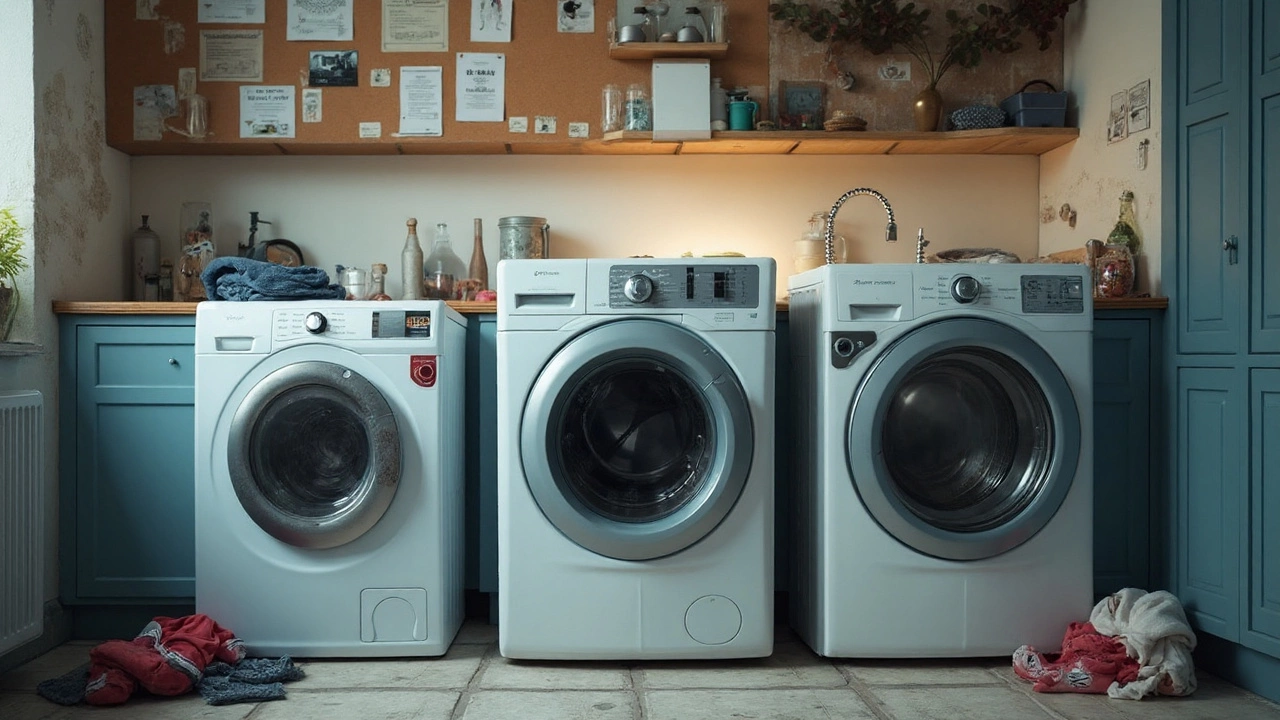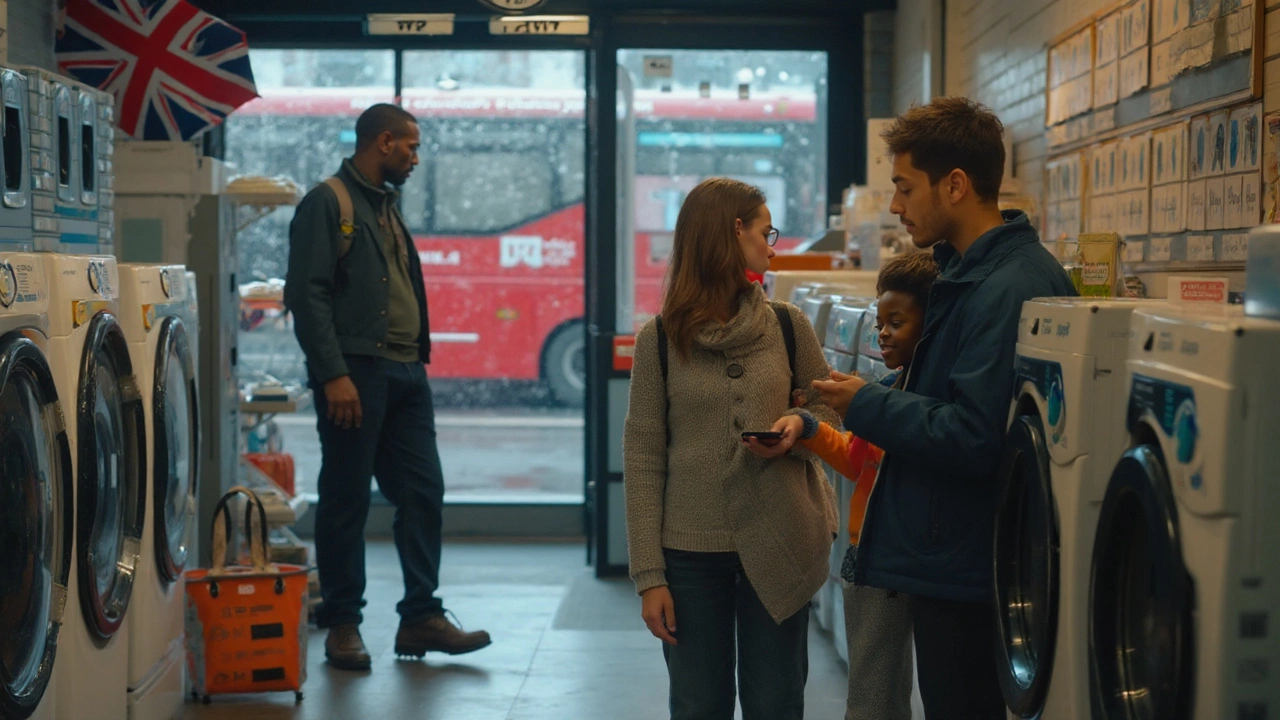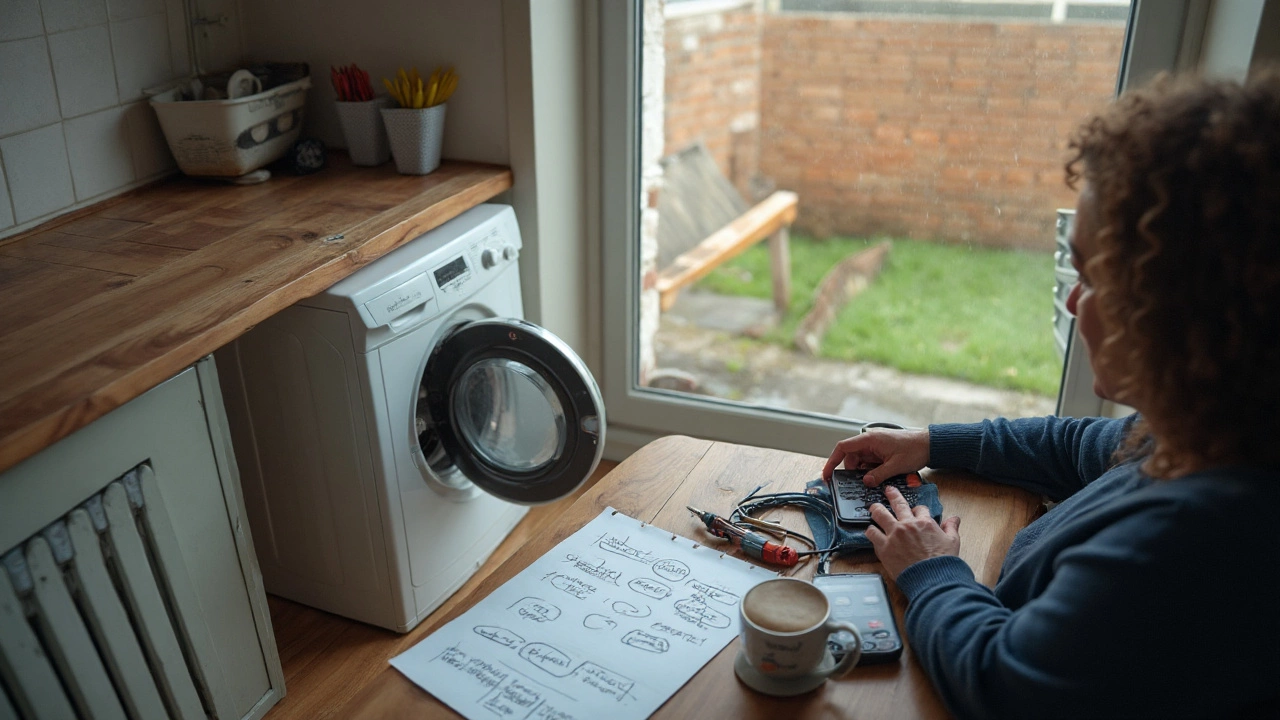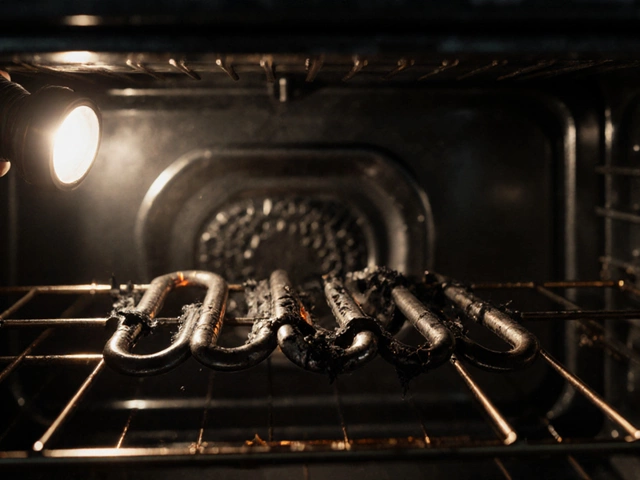If you’re asking whether your washer is “old,” you’re really trying to decide if another repair is worth it-or if it’s time to replace before it eats more money, water, and electricity. There isn’t one magic age. It depends on the machine type, how much it’s used, the water where you live, and the kind of failures you’re seeing. I’ll give you a clean, quick answer first, then show you how to judge your specific washer with simple cost math, a decision rule that works, and a hands-on checklist. I live in Brisbane, where humidity and hard-ish water can be rough on seals and valves, so I’ll also flag a few Aussie-specific tips.
Quick answer: what’s considered old for a washing machine in 2025 (TL;DR + key takeaways)
The short version: a washing machine lifespan is usually 8-12 years. By year 10, most washers are “old” in the sense that repairs get more frequent and efficiency lags far behind new models.
- Typical lifespan: 8-12 years. Front-loaders often last a bit longer than budget top-loaders.
- “Old” in practice: 10+ years, or any age with multiple major repairs in the last 2 years.
- 50/50 rule: If the repair quote is over 50% of the price of a similar new machine-and the washer is past half its expected life-replace.
- Major failures that tip to replace: drum bearings, control board + motor, or repeated pump/valve failures.
- Energy/water costs matter: New 4-5 star front-loaders can save ~$80-$200 per year on power/water (more if you tumble-dry often).
- Australian angle: Check Energy Rating and WELS labels. Under Australian Consumer Law, “acceptable quality” lasts a reasonable time-so if a pricey washer dies early, you may still have rights beyond warranty.

How to judge your washer’s real age: lifespan ranges, failure signs, and cost math
Age is only one part of the story. Think of “old” as wear and risk, not just a birthday. Here’s how to size up your machine like a pro.
1) Lifespan ranges by type and build quality
- Front-loaders (mid-range and up): Commonly 10-12 years with normal use. Better on water, gentler on clothes.
- Top-loaders (budget models): Often 7-10 years. Simpler, but many use more water and can be harder on fabrics.
- Premium machines: Heavier drums, better bearings, and inverter motors can push 12-15 years if maintained.
What pushes a washer to the end of life? Bearings wearing out (grinding roar on spin), cracked spider arms (drum wobble), repeated control board faults, or leaks that keep coming back. Once one major mechanical part goes on an older washer, others tend to follow.
2) Usage and environment (Brisbane reality check)
- Loads per week: 3 loads/week is easy living. 7-10 loads/week ages a machine twice as fast.
- Humidity: In SEQ, door seals and dampers age quicker. Keep the door open after washing to prevent mould.
- Water hardness and quality: Mineral scale and grit stress valves, pumps, and heaters. A simple inlet filter helps.
3) The cost math that actually matters
- Replacement price for a similar machine (today): Note a real price from a couple of local stores.
- Repair quote: Include parts, labour, call-out, and any delivery/haul-away amounts.
- Efficiency gap: New machines often cut 0.2-0.5 kWh per wash and 30-80 litres of water. That adds up.
Typical Aussie numbers for 2025 to help you ballpark it:
- Electricity: About $0.25-$0.35 per kWh (Australian Energy Regulator residential ranges).
- Water usage charge: Roughly $2.50-$3.50 per kL in SEQ for the variable component (council/utilities differ).
Example savings: If your 12-year-old top-loader uses ~120 L and ~1.0 kWh per warm wash, and a new front-loader uses ~60 L and ~0.6 kWh:
- Water saved: ~60 L per load. At 5 loads/week, that’s ~15.6 kL/year = ~$40-$55 saved on water.
- Energy saved: ~0.4 kWh per load. At 260 loads/year and $0.30/kWh, that’s ~$31/year saved on power.
- If you use a dryer: A higher spin speed (1200-1400 rpm) removes more water, cutting dryer time. Realistically, that can save another $50-$150/year in electricity or gas.
So a new, efficient front-loader might put $80-$200 back in your pocket each year, depending on how you wash and dry. Spread over a 10-year life, that’s $800-$2,000 in running-cost impact-not small.
4) The 50/50 decision rule (it works)
- Find the price of a comparable new washer (same capacity, not a downgrade).
- Get a firm repair quote.
- If repair cost > 50% of the new price AND your washer is past half its expected life, replace.
Example: Your 9-year-old 8 kg front-loader needs a $600 repair. A good new 8 kg front-loader with 4.5-star WELS water and 4-star energy is $1,100 delivered. The repair is 55% of replacement and the machine is past mid-life. Replace.
5) Common failures and what they mean
- Drain pump: No drain or loud buzzing. Often $150-$350 supplied and fitted. If the machine is otherwise healthy and under 8-9 years, fix it.
- Inlet valves/pressure switch: Overfilling, slow fill, or error codes. $120-$250 usually. Fixable at almost any age if the rest is sound.
- Door seal (front-loader): Leaks or mould. $150-$300. Worth doing unless rust has spread or the machine is ancient.
- Bearings/spider arm: Roaring spin, metal flakes, wobble. $350-$700+ and labour-intensive. On older machines, often a replace call.
- Control board (PCB) or inverter motor: Intermittent dead machine, random errors. $300-$900 depending on brand/model. On a 10-year-old, think twice.
6) Reliability and local consumer rights
- Front-loaders tend to be more water-efficient and treat clothes better. Many last 10 years or more with basic care.
- If a higher-end washer fails early, Australian Consumer Law (ACCC) can help: products must be of acceptable quality and last a reasonable time. That can extend beyond the stated warranty on major failures.
- Australian labels: Check both the Energy Rating label (stars and annual kWh) and WELS water rating (stars and litres per wash).
| Washer age | Typical years left | Common failures | Typical repair cost (AUD) | Repair or replace? |
|---|---|---|---|---|
| 0-5 years | 5-8+ | Valves, pump, door seal | $120-$350 | Repair unless lemon; check ACL rights if major |
| 6-9 years | 2-5 | Pump, bearings, suspension, PCB | $150-$700 | Repair small stuff; think hard on bearings/PCB |
| 10-12 years | 0-2 | Bearings, PCB, motor, leaks | $300-$900 | Often replace, unless a cheap, simple fix |
| 13+ years | Uncertain | Multiple systems aging | $300-$900+ | Replace; efficiency gains will pay back |

Repair or replace? Checklists, decision tree, FAQ, and next steps
Here’s a simple way to make the call today without second-guessing tomorrow.
Quick checks before you call a tech (free or cheap fixes)
- No drain? Clean the coin trap and pump filter. Clear the hose and check for socks at the pump impeller.
- Won’t fill? Clean inlet screens, check the tap is fully open, and straighten the hose.
- Machine walks or shakes? Re-level the feet, move it onto a firm surface, and avoid overloading.
- Bad smell? Run a hot maintenance wash with a proper cleaner or plain white vinegar (no clothes). Leave the door open to dry.
- Random cut-outs? Try a different power point to rule out a dodgy outlet. Check the wall switch is on.
If one of those fixes solves it, you just bought more life at $0.
Decision tree (fast, but solid)
- How old is it?
- < 6 years: Lean toward repair, especially for pumps, valves, seals.
- 6-9 years: Case-by-case. Small fixes, yes. Big jobs, do the math.
- 10+ years: Assume it’s “old.” A major repair likely isn’t worth it.
- What’s the fault?
- Minor (pump, valve, seal): Fix if the rest of the machine is healthy.
- Major (bearings, PCB, motor): Replace if the machine is 8-10+ years or has a repair history.
- How much will a new comparable machine cost? Include delivery and haul-away.
- Apply the 50/50 rule. If repair > 50% of new and the washer is past mid-life, replace.
- Consider running-cost savings: If you dry clothes in a dryer often, a high-spin front-loader upgrades your wallet too.
Repair cost clues by symptom
- Loud grinding on spin: Bearings or spider arm. Often a replace signal if the unit is older than ~8-9 years.
- Water on the floor: Check door seal first; if the drum or tub is cracked, replacing the whole unit is usually smarter.
- Dead control panel: Could be as simple as a fuse or as painful as a PCB. Get a quote. If $400-$700 on a 10-year-old, replace.
- Won’t spin heavy loads: Suspension wear or a failing motor. If the fix exceeds a few hundred dollars on an older unit, think replace.
Buying new? What to look for (Australia, 2025)
- Capacity you’ll actually use: 7-9 kg suits most households. Don’t buy a 10 kg if you usually wash 4 kg.
- Energy Rating (stars) and kWh/year: Higher stars, lower kWh/year, lower bills. Compare labels directly.
- WELS water rating: Aim for 4.5-5 stars for front-loaders if you can.
- Spin speed: 1200-1400 rpm is a great sweet spot for faster drying.
- Noise and vibration control: Useful in apartments or on timber floors.
- Serviceability: Check parts availability and local service for the brand. A cheap machine with no parts is expensive later.
Good-to-know price ranges (AUD)
- Solid 7-8 kg front-loader: ~$700-$1,200.
- Premium 8-10 kg front-loader: $1,300-$2,200.
- Delivery/installation: ~$80-$150. Old unit removal: often $0-$50.
Make your current washer last longer (if you’re keeping it)
- Monthly: Clean the pump filter and run a hot maintenance cycle.
- Quarterly: Check and clean inlet screens, wipe the door seal and dispenser, and re-level the machine.
- Yearly: Inspect hoses for bulges or cracks; replace braided hoses every 5-7 years.
- Always: Don’t overload. Use HE detergent in front-loaders. Leave the door open after washes.
Mini-FAQ
- Is a 7-year-old washer old? Not really. It’s mid-life. Fix small stuff; rethink big-ticket repairs.
- Is 10 years old for a washing machine? Yes, that’s “old” in practical terms. Any major repair at this age should face the 50/50 rule.
- Front-loader vs top-loader lifespan? Mid-range front-loaders often edge out budget top-loaders. Build quality matters more than type alone.
- Do brands matter? They do for parts and service access. Pick brands with ready parts in Australia and responsive service.
- Extended warranties worth it? Often not. Rely on ACL protections plus sensible maintenance. If you buy premium, check the brand’s support record.
- Can an inverter motor or PCB be repaired? Sometimes, but parts cost adds up. On older units, replacement is often smarter.
Next steps
- Write down your washer’s age, model, and symptoms. Note any past repairs.
- Get a firm repair quote. Ask for parts + labour + call-out itemised.
- Price a comparable new machine (capacity/features) from two local retailers. Include delivery and removal.
- Run the 50/50 rule and include likely efficiency savings ($80-$200/yr typical).
- If replacing: choose 4+ star energy and 4.5-5 star WELS, 1200-1400 rpm, and a size that matches your real loads.
Troubleshooting by scenario
- Budget is tight, washer is 11 years, needs a $250 pump: Repair, but start saving for a replacement. Keep loads lighter and run maintenance cycles.
- Family of five, 8-year-old machine needs $600 bearings: Replace with a 9-10 kg efficient front-loader. Your dryer bill will likely drop too.
- Apartment living, machine shakes the floor at 6 years: Try anti-vibration feet, re-level, smaller loads. If it still walks, suspension repair could be worth it.
- Premium washer died at 4 years with PCB fault: Push the retailer/manufacturer under ACL for remedy beyond standard warranty.
Bottom line: Call a washer “old” when repairs become frequent, the next quote breaks the 50/50 rule, or its thirst for water and power is costing you weekly. If you’re on the fence, do the simple math above once-and make the decision you won’t have to revisit in six months.





